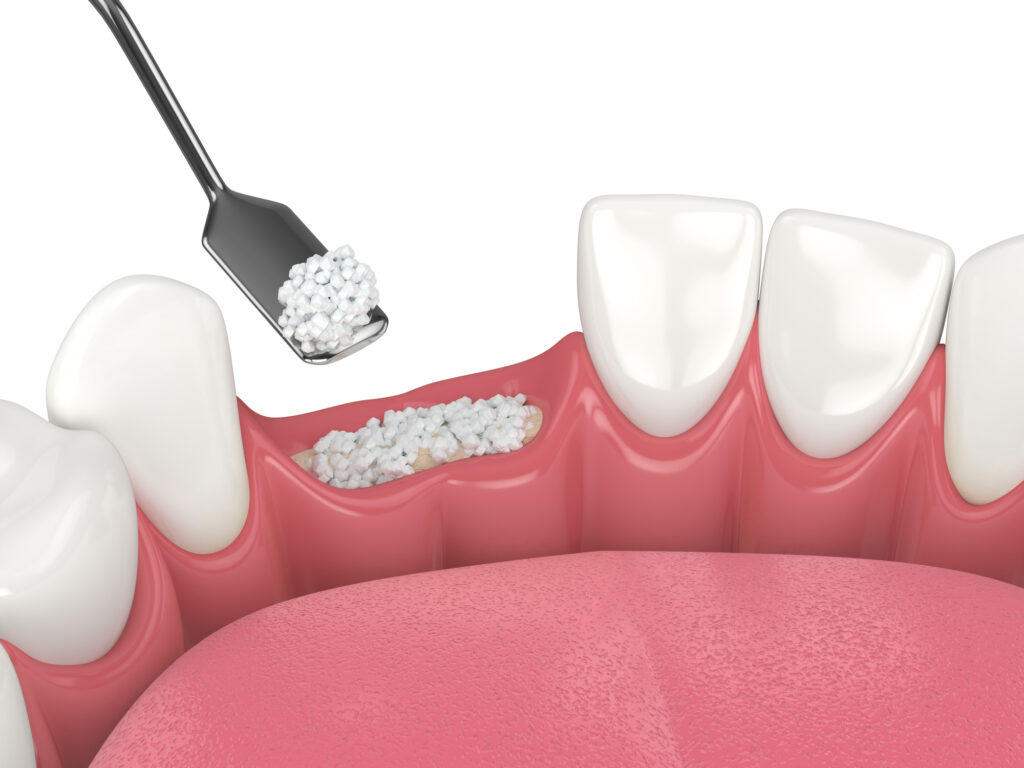To keep a dental implant firmly rooted for decades, you need thick, healthy jawbone. Unfortunately, gum disease, extractions, or natural sinus anatomy can leave your upper or lower jaw too thin for a titanium post to lock in. That’s where Dr. Ivanov at Precision Periodontal and Implant Center steps in.
Using advanced bone-augmentation techniques—socket or ridge grafts, bone plates, and sinus lifts—he restores lost structure so implants integrate and function like natural roots. Below, we explain how each procedure works and what to expect when you call 424-626-1960 for a consult.
Why Bone Volume Determines Implant Success
Osseointegration—the fusion between implant and living bone—only happens when the titanium threads contact solid tissue on all sides. If the ridge is narrower than 6 mm or the sinus floor dips low over upper molars, the implant risks wobbling loose or puncturing the sinus membrane. Augmentation adds height or width so the post achieves a secure, 360-degree grip.
Bone Grafting Basics
What it is. A bone graft packs biocompatible granules or thin bone plates into areas that have shrunk after tooth loss. Dr. Ivanov may use sterilized donor material or small chips harvested from another spot in your mouth.
Guided Bone Regeneration. A collagen membrane covers the graft, blocking soft tissue so new bone cells fill the space during a 3–6-month healing phase.
When we choose it.
- Fresh extraction sites (socket preservation)
- Long-healed gaps that look knife-edge thin (ridge augmentation)
- Lower jaw areas with vertical bone loss
When a Sinus Lift Makes Sense
In the back upper jaw, the maxillary sinus often expands downward after molar loss, leaving barely a few millimeters of bone. A sinus lift gently raises the sinus membrane, creating a pouch that Dr. Ivanov fills with donor or bovine graft material. Over 6–8 months that graft turns into your own bone, giving upper-molar implants the 10 mm of vertical depth they need.
FAQ: What to Expect During Healing
Does it hurt? Local anesthesia blocks sensation; most patients describe post-op soreness as “scraped-knee” discomfort, managed with over-the-counter pain relievers and a soft diet for three days.
How long until the implant?
- Socket graft: 3–4 months
- Ridge augmentation: 4–6 months
- Sinus lift: 6–8 months
Can the graft and implant go in together? Yes, if at least 50% of native bone remains. Larger defects require staged treatment.
Will grafting change my facial look? Restoring lost volume often supports lip and cheek contours—a subtle cosmetic bonus.
Cost and Insurance Snapshot
Augmentation adds roughly 20–30% to total implant fees, but skipping it risks a failed $4 k implant later. Many PPO plans pay a portion under codes for “alveolar ridge augmentation” or “sinus augmentation.” Our treatment coordinator at Precision Periodontal and Implant Center will pre-authorize benefits so you know exact out-of-pocket costs before treatment begins.
How Precision Periodontal and Implant Center Guides Your Choice
- 3-D CBCT imaging pinpoints bone dimensions to 0.1 mm, ensuring no guesswork.
- Tailored graft selection—autogenous, donor, or bovine—fits your biology and budget.
- One-visit or staged protocols matched to your timeline and health.
- Transparent follow-up: you receive a printed home-care plan and 24/7 access to our team at 424-626-1960 during healing.
Bottom Line
Bone grafting and sinus lifts aren’t upsells; they’re engineering steps that let implants live their full, decades-long lifespan. If a prior exam showed you lack bone, schedule a 3-D scan with Dr. Ivanov at Precision Periodontal and Implant Center. You’ll leave with a clear roadmap—from regeneration to final crown—and the confidence that your restored smile is built on rock-solid foundations.

